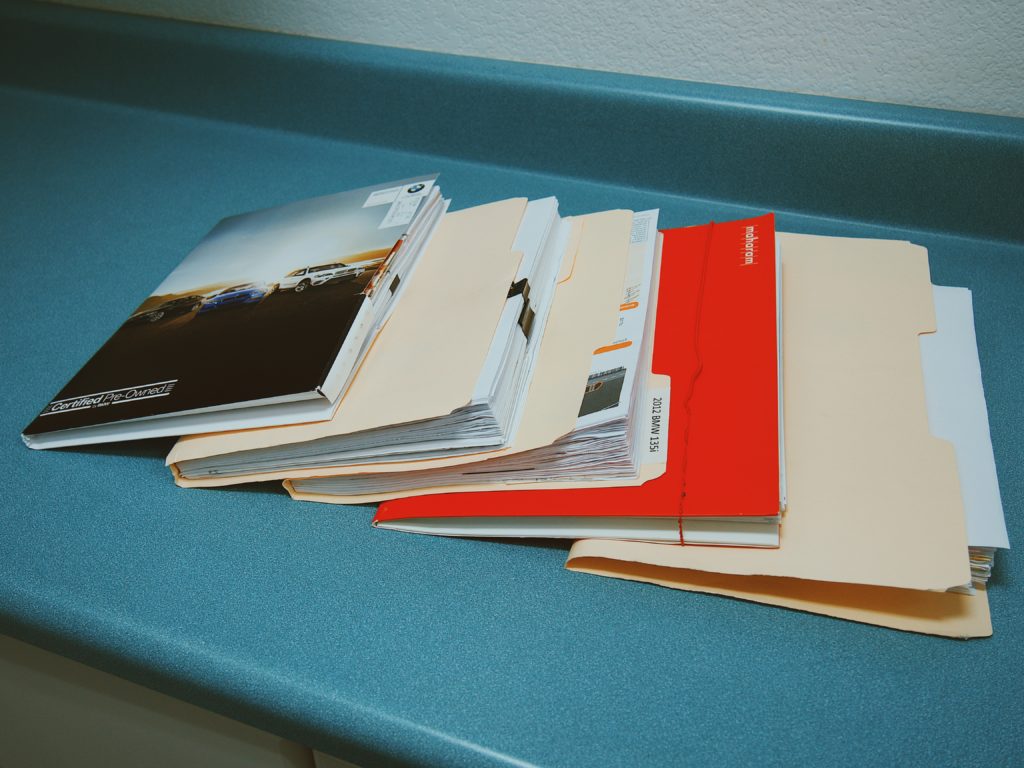Record keeping, as it applies to car maintenance, can pay dividends. Retaining the receipts and invoices we so carefully saved up and planned for once the work has been completed is part of the stewardship involved with owning a car one cares for and seeks to preserve. Selling your M20-powered E30? You can bet that listing the last timing belt service in the ad and including the appropriate documentation proving such with the sale of the car will make the process easier and more palatable for all involved parties. Looking for an E60 M5, E9X-generation or E46 M3? You’re probably already tired of scouring each listing for the term rod bearings, and hoping a potential seller has the associated evidence.
A lot of us are already aware of the value that proper record keeping can add to a car, especially when considering hot maintenance items like the forum discussion topics listed above, but how are you supposed to know what to keep and what to throw away? What is too little, and what is too much? How does one know when they’ve gone too far?
An ever-expanding collection that has grown beyond the confines of a file cabinet and into bankers boxes might be one indicator. Couple that with an archive of Excel spreadsheets, each complete with multiple tabs tracking maintenance, modifications, average service intervals and other metrics, and the obsession begins to assume a tangible form.
My name is Alex Tock, and I am a vehicle maintenance record junkie.

It started with my first car, and in the short time until I bought my first BMW—an incredibly rough, sub-$1,000 E28 535i, when such a thing could still be had, if you were curious—the affliction had already developed into a occupying a few thick file folders and an ever-updated iteration of an Excel spreadsheet designed to track it all. Fast forward to current times and a fleet that’s as large as its ever been, and the record keeping has transitioned into a part-time job.
Several vehicles, each with their own maintenance file and spreadsheet. The bulk of the physical files are service invoices and parts receipts, while registration documents and other purchase paperwork is kept separately. There’s also the insurance stuff, but I only keep the newer statements, and it all gets tossed when the car moves to a new owner. The important stuff, like the files showing what’s been done to the car and when, are great help when selling a car, but with the advent of the internet and, particularly, Amazon.com, a new caveat enters the equation.

Rather than going home from the dealership or independent mechanic with a paper record of what I just bought, or the service I just shelled out for, the proof of important things purchased online must usually be printed. This isn’t a problem when you’ve got a squadron of LaserJets at your disposal, but it still means you have to find the invoice in printable form, print it, and then file it. Over time, I’ve fluctuated between keeping too many records and pieces of paper for one item, to forgetting to print recent online purchases, and add them to the spreadsheet tab which lists past expenses. More recently, I’ve settled into a good routine of keeping things updated without obsessing, but I still feel like I’m always on the verge of doing an all-night audit.
What about the above questions, though? After years of trial and error, I think I’ve found a good formula that works for me, but as with anything we create or develop, it’s always open to improvement. I retain the important service records that work as a whole to show that the car was maintained properly and, at the minimum, to factory spec, along with receipts for things I’ve bought or replaced. For higher mileage cars with incomplete histories, I don’t bother recording car washes or other routine work like checking the tire pressure and wear in the spreadsheet, but on lower mileage cars, leather treatment sessions and tread depths are logged. Items purchased on eBay are plentiful, especially when it comes to the kinds of odds and ends that there exists a decently strong market for, like E30 interior bits, but you probably don’t need to print the accompanying PayPal transaction receipt—although, the transaction ID has come in handy at least a few times for me.

How about gas receipts and the fuel log? Roundel editor-in-chief Satch Carlson keeps a small red book in the center console storage compartment of his Alpine White on Imola Red Z4 M Roadster, in which each and every fuel stop is notated, with data points such as the location, date, number of gallons and mileage—I believe he does the same with his Topaz Blue Z8. A few of my cars have been with me too long, or are too far down their own road to bother starting this practice with, but some of the more transient residents currently in my stable are another story.
On cars that I’ve planned to keep for a bit and then sell, where expenses really matter, I’ve begun retaining gas receipts. It’s easy with Shell’s Fuel Rewards program, as every receipt is emailed to me as soon as I complete the transaction at the pump. I’ve got a Shell card in each vehicle so I know which receipt belongs to each car, and although my records aren’t as complete as those referenced above, they still help to form my own personal picture of money spent when it’s time to pass the car on to someone else.
So there you have it; I am a vehicle maintenance record junkie who shows no signs of ever having an ability to recover, but at least I can tell you exactly where all of the money went!—Alex Tock
[Photos courtesy Alex Tock.]





















